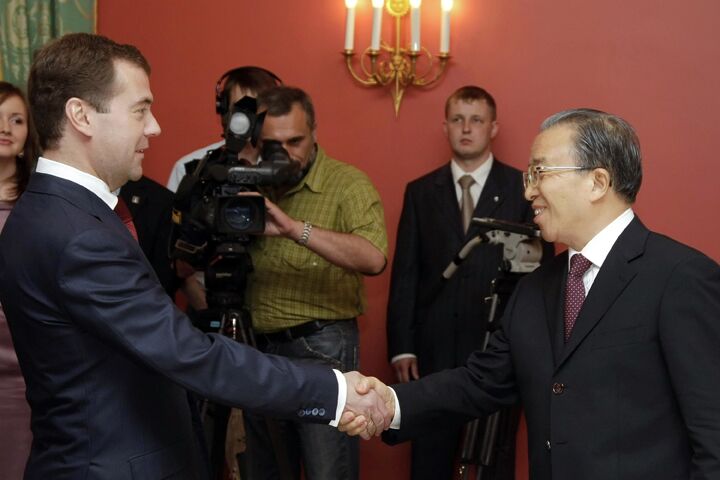
A New Alternative to Treasury Bonds?
Brazil, Russia, India and China have announced that they plan to invest in the new International Monetary Fund (imf) bond as they look for alternatives to the U.S. treasury bond.
Russia announced Wednesday that it plans to sell some of its $140 billion in treasury bonds in order to invest $10 billion in the new imf bond. China said it plans to buy up to $50 billion worth of the new bonds. India and Brazil also said they will buy imf bonds.
“Given the amounts involved—for instance, China has committed to buying about $50 billion of imf bonds—in a pool of $2 trillion of reserves, this is not going to make a big difference,” said Eswar Prasad, a professor of economics at Cornell University. “But symbolically it’s still very important that these emerging markets are looking for an alternative to the dollar in the short term, and this might be a viable option.”
“We are planning to gradually reduce the share of U.S. treasuries as a window of opportunity for working with other instruments is opening, and the situation with foreign banks has become clearer,” Alexey Ulyukaev, first deputy chairman of the Bank of Russia, said.
Brazil, Russia, India and China—known collectively as the bric nations—have combined reserves of $2.8 trillion. China has the world’s largest reserves, and Russia the third-largest.
Nouriel Roubini, a professor of economics at New York University who predicted the current financial crisis, warned that this could lead to the deterioration of the dollar as the world’s only reserve currency.
“We may see complementary reserve currencies,” said Roubini at a conference in Athens on Thursday. It’s “not going to happen overnight,” but the development “will diminish the role of the dollar over time,” he said.
Officials from bric nations will meet in Russia on June 16, where “they are widely expected to discuss alternatives to the U.S. dollar as the global reserve currency,” according to the Associated Press. Russia, China and Brazil in recent months have all proposed that nations move away from the dollar as the main reserve currency.
As well as being a step away from the dollar, purchasing imf bonds could also be an attempt by the bric countries to gain more power in the International Monetary Fund. They feel that their voting power in the imf does not reflect their growing influence in the world economy. They may try to use the fact that they have loaned money to the imf in the form of these bonds as leverage to gain more power.
These imf bonds will be denominated in Special Drawing Rights (sdrs)—an artificial form of currency used by the imf. It is weighted against a basket of currencies, including the dollar, the euro, the pound and the Japanese yen.
China recently suggested that sdrs replace the dollar as the world’s reserve currency.
“We hate you guys. Once you start issuing $1 trillion, $2 trillion … we know the dollar is going to depreciate, so we hate you guys, but there is nothing much we can do,” Luo Ping, director general at the China Banking Regulatory Commission, famously said in February.
“Except for U.S. treasuries, what can you hold?” asked Luo. “Gold? You don’t hold Japanese government bonds or UK bonds. U.S. treasuries are the safe haven. For everyone, including China, it is the only option.”
These nations don’t want to use U.S. treasuries, but they feel they have no choice. imf bonds and Special Drawing Rights are a possible alternative to the dollar. The fact that the bric countries are buying them, and in some cases selling treasuries to do so, shows that they are looking for ways to get away from the dollar.
The U.S. government is issuing bonds at an unprecedented rate to stay afloat. But the world can see America’s instability, and it is looking for other options. Once a viable alternative to the dollar is found, America is in serious trouble. For a glimpse at what may prove to be the next reserve currency, read “New Global Trend: Dump a Dollar, Buy a Euro” by Brad Macdonald.
